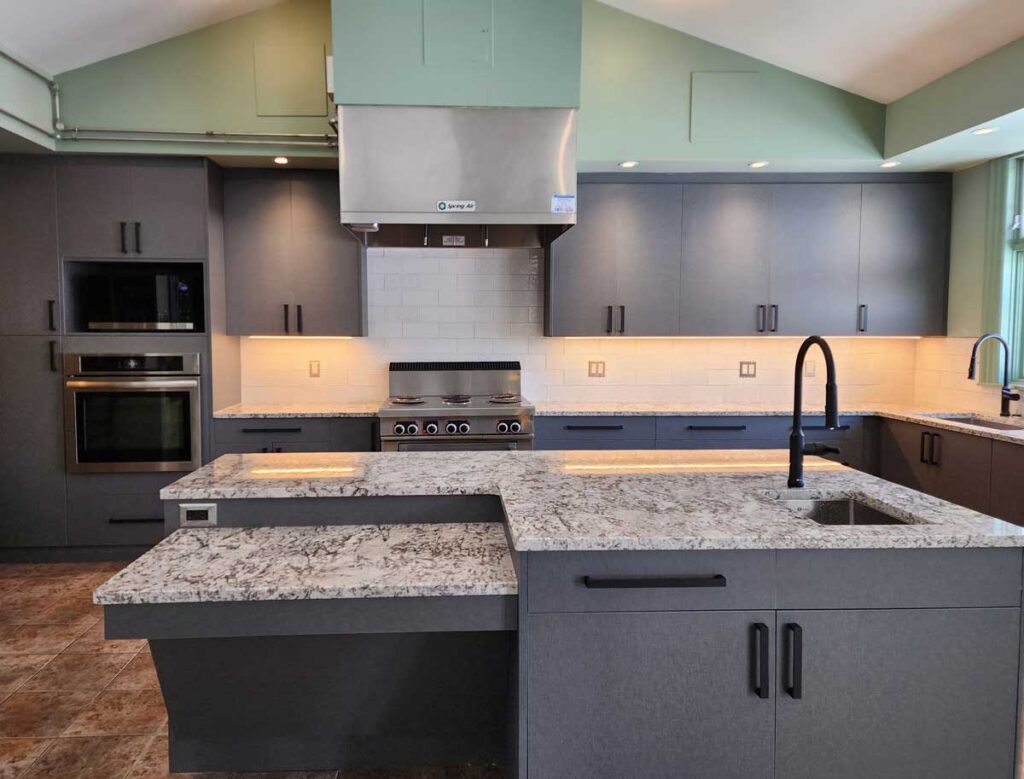By Donna Heiderstadt
Each day at KBIS 2024, NEXTStage hosted a forward-thinking speaker as part of its “Disruptor Series,” including sustainability visionary Lew Oliver, Founder of Lew Oliver Inc., a Clarksville, GA-based architecture and urban planning firm. His talk was titled The Big Picture: A Visionary’s Approach to Sustainability in Society. “The big picture” has been Oliver’s specialty over the past decade as he transitioned from a traditional architectural practice to one focused on creating entire communities rooted in sustainable construction, design and living.
Oliver was introduced by Delphine Francois Chiavarini, Vice President of Global Integrated Marketing for Moen, which sponsored the presentation. “As a company, Moen is focused on how we can make the least environmental impact and still have an impressive result,” she said. According to Chiavarini, the company’s Mission Moen project, announced in 2020, is well on its way to conserving one trillion gallons of water and recycling 2,000 tons of ocean plastic by the year 2030.
Oliver kicked off his presentation with the question: “What is sustainability?” He said we tend to think of it in terms of green energy, responsible construction and recycling, but those things are just the tip of the iceberg. He shared his wide-angle view of sustainability, which in terms of a community, should include smart land planning, renewable energy, net-zero buildings, biodiversity, mixed use buildings, long-lasting materiality, efficient building practices, multi-modal transportation, housing diversity and restorative landscaping. Communities should also be designed for multi-generational residents, sociability, physical wellness and mental and spiritual well-being.
Those are the foundations of Trilith, a sustainable community designed by Oliver located south of Atlanta. The town sits next to state-of-the-art filmmaking studios and is designed in a walkable European style for a diverse population of creative-minded residents who share a goal of fostering an “intentional community.” Spread across 264 acres, half the space has been developed; the other half is preserved as green space. Trilith features 1,400 housing units. Homes make up 600 of the units, ranging from 850-square-foot micro-homes to 4,000-square-foot custom residences. The 800 other residences include studio, one-bedroom and two-bedroom lofts.
Streets in Trilith are narrow, and half are green streets for pedestrian use only. Homes are constructed close together in a European manner (10-25 units per acre), are powered geothermally (residents have an average monthly utility bill of $50 and there are no noisy air-conditioning units) and yards are very small, with the majority of green space being shared space, such as the Great Lawn.
Walkability is a key component of a sustainable community, said Oliver, and landscaping is vital. “When creating a pedestrian town, you have to reward residents with visual delight,” he explained. Trilith has no concrete sidewalks — only porous materials such as gravel were used — and mixed-use buildings for retail and dining are easily accessed on foot. “We try to put the best design ideas not just into the houses, but also on a community level,” Oliver noted.

Oliver also admitted the one way that Trilith didn’t fulfill its promise. “We set out to offer affordable housing as part of the community,” he said, “and in that sense we failed.” Why? Demand sent prices surging. He explained that a 1,000-square-foot home without a garage in Trilith sells for three times what it would normally sell for in the Atlanta suburbs, therefore being out of reach for middle-income buyers such as teachers. Trilith does have a small private school as well as several public schools nearby.
In Trilith, Oliver explained, homes are built using local stone and brick for a lower carbon footprint, and spaces are sized for zero waste when it comes to lumber. Windows are clad and roofing materials are permanent rather than asphalt shingles with a limited lifespan.
He also noted that builders interested in developing similar communities need to care about doing something exceptional — but when they see the numbers they will be happy. A 1,000- to 1,200-foot home on a 30-by-50-foot lot in Trilith will sell for $800,000 — the same price as a 3,000-square-foot home on a normal lot in a traditional suburb.
“I got into this and became an ambassador for the green housing movement,” concluded Oliver who currently has two more sustainable communities — Burton, near Atlanta, Georgia, and Hartness, near Greenville, South Carolina — in development. “What we built is truly sustainable, not just in building performance but also in what makes a town walkable and inclusive.”























